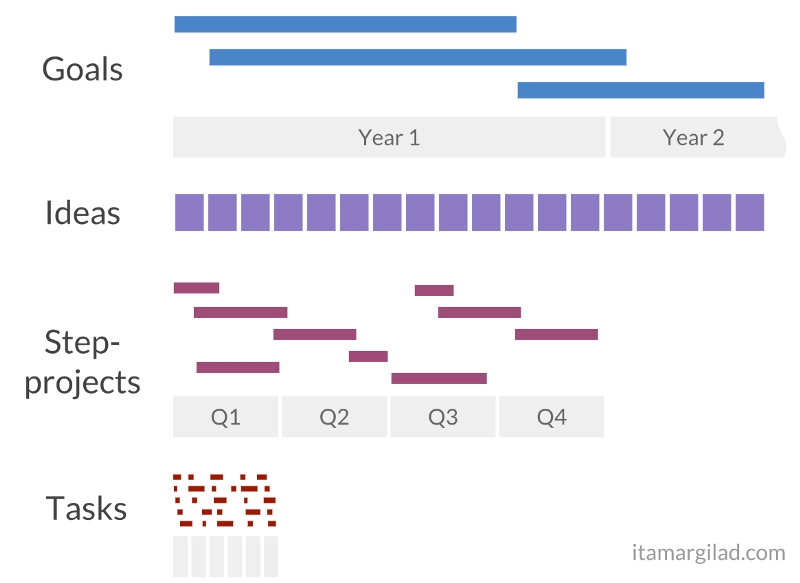⏸️ Give it 5 minutes / PM Snacks 87
How Supabase launch • Give it five minutes • Better communicate as an hyper-rational • Learn to prototype with 5 AI tools • Use GIST Framework rather than roadmaps
Hey everyone,
I love sharing behind-the-scenes stories that reveal the nitty- gritty of how companies build their success, beyond generic frameworks. That’s why I’m thrilled to kick off today’s newsletter with a deep dive into Supabase’s early days.
I’ve also curated 2 articles that invite us to lead with curiosity and thoughtfulness, transforming our instinct of pushing back, into an opportunity for deeper understanding and smarter communication.
Finally, you’ll find an hour long tutorial on how to prototype your ideas with AI tools like Bolt, Cursor, Lovable, Replit and v0. Don’t worry, each tool appears in a specific 10min segment, for which I have shared the time- codes below. If you ever wondered what’s new, it’s a great way to discover it.
Please support this newsletter by sharing it with colleagues or liking it (tap on the 💙).
Enjoy!
🍭 5 snacks
1️⃣ How we launch at Supabase? • Nov 2021 • 8 min read • #execution
A new behind-the-scene piece focusing on how Supabase used to operate in the early days. They started with Y Combinator, faced unexpected growth, and kept shipping relentlessly. Some unique traits:
- Internal accelerator mindset: they combined fixed timeline (3mo) with flexible scope, bold bets and regular demos (similar to YC demo-day). The goal is to ship ambitious features, with a sense of urgency and accountability. They often ask “what is the MOST ambitious thing we could hope to ship 3 months from now?”.
- Iterate and improve: perfect timing is rare, instead, they ship early and often. They even launch each feature multiple times, in order to capture different segments of their audience and adjust based on immediate feedback.
2️⃣ Give it five minutes • Mar 2012 • 5 min read • #mindset
I wish I’d received this advice earlier in my career. Back then, my insecurity pushed me to quickly affirm and double down my opinions, often missing the chance to listen to others with genuine curiosity. Now, I make it a point to give every idea its five minutes, in conversations and product management alike. With the lowering implementation cost, I even try to test more concepts than before, especially when I doubt them (♥ Cursor).
3️⃣ Picking your battles when you are hyper-rational • Jan 2025 • 4 min read • #communication
Wes Kao is a seasoned tech leader specializing in executive coaching, and notably helping operators to develop efficient communication. In today’s article she shares examples of times she got caught up in being technically right, at the expense of being effective. Be sure to check this article to escape this trap. Give it five minutes, and communicate better.
🤖 Tutorial: learn to prototype with 5 AI tools • Mar 2025 • 1h watch • #AI
Colin Matthews was invited into Akkash Gupta’s podcast to demo how PMs can create prototypes thanks to AI. The video is not short, but it’s super didactic and it covers 5 tools. Here are the timing: 0:31 - Bolt Tutorial, 32:14 - Cursor Tutorial, 44:29 - Lovable Tutorial, 58:54 - Replit Tutorial, 1:11:29 - v0 Tutorial.
⏳ Why you should stop using product roadmaps and try the GIST Framework • Feb 2018 • 7 min read • #execution • Most clicked link 1y ago in PM Snacks 69.
The author explains why he no longer uses product roadmaps (= usually created through a waterfall process) and suggests the GIST Framework as an alternative. It consists of:
- Goals: start with your OKRs and/or strategy. Focus on outcomes rather than solutions. For example: increase to 25% of key actions performed on the mobile app.
- Ideas: describe 1 to 3 hypothetical ways to achieve these goals. Possibly work on it with your stakeholders, as well as your squad. I’d advise not to keep ideas in a backlog (since it’d become ever growing quite fast).
- Step-projects are experiments that test the ideas and are no more than (10) 6 weeks long (or even faster).
- Tasks are the individual steps that needs to be completed to finish the Step-projects.
🗄️ Recently saved
Links worth reading that I saved, and did not choose to highlight:
- Here’s how I use LLMs to help me write code by Simon Willison
- Product Management In The Age of AI: eliminates the low value parts (document creation, reporting, …) and enhances important ones (decision making, strategic direction)
- Is your app a painkiller or a vitamin - Andy Allen (not boring software) explains why this analogy should be retired
- Claire Lew was asked by someone deciding between two jobs: "How do you know if a leader is a good leader to work for?”
- Steve Jobs on when people will be able to talk with Aristotle (intro of “Building with AI” talk by Des Traynor - CEO of intercom)
—
Thank you for reading this far.
Until next time!
Olivier
Share → Please help me promote this newsletter by sharing it with colleagues (tap the refer button) or consider liking it (tap on the 💙, it helps me a lot)!
About → Productverse is curated by Olivier Courtois (15y+ in product, Fractional CPO, coach & advisor). Each issue features handpicked links to help you become a better product maker.


